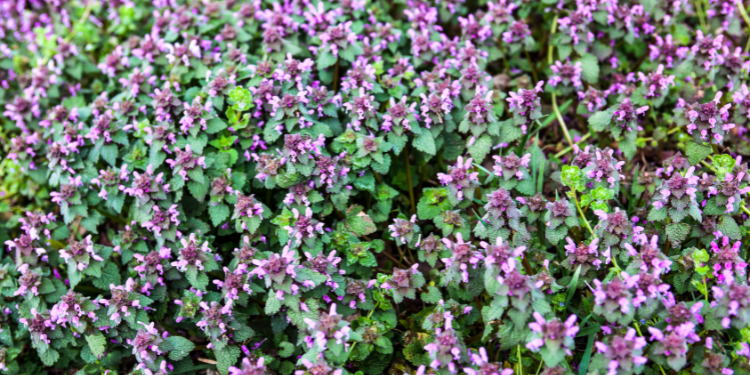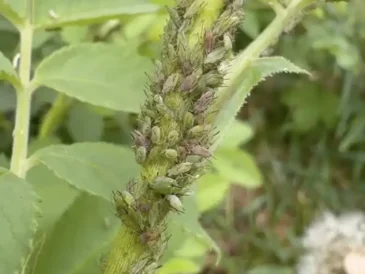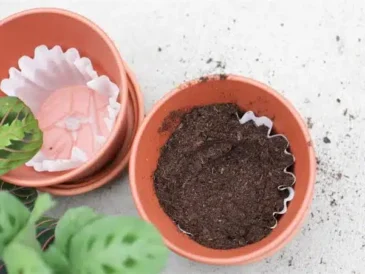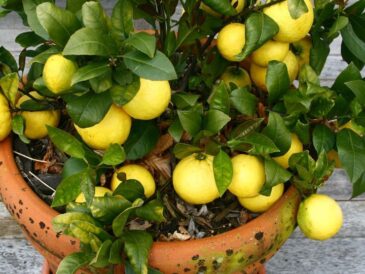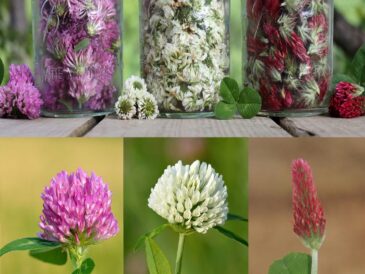Purple dead nettle (Lamium purpureum) is often mistaken for a weed, growing wild in gardens, along roadsides, and in fields across much of North America and Europe.
But don’t be so quick to pull it out of your garden—this underappreciated plant is both edible and medicinal, packed with beneficial properties and uses.
In this guide, you’ll learn how to properly identify purple dead nettle and explore the many brilliant ways you can use this free herbal treasure.
What Is Purple Dead Nettle?
Despite its name, purple dead nettle is not actually a true nettle. It belongs to the mint family (Lamiaceae) and is known for its square stems, fuzzy heart-shaped leaves, and small purple-pink flowers.
Unlike stinging nettles, purple dead nettle does not sting—hence the name “dead” nettle.
It’s a common spring wildflower and is one of the first blooming plants of the season, making it an important early nectar source for pollinators like bees.
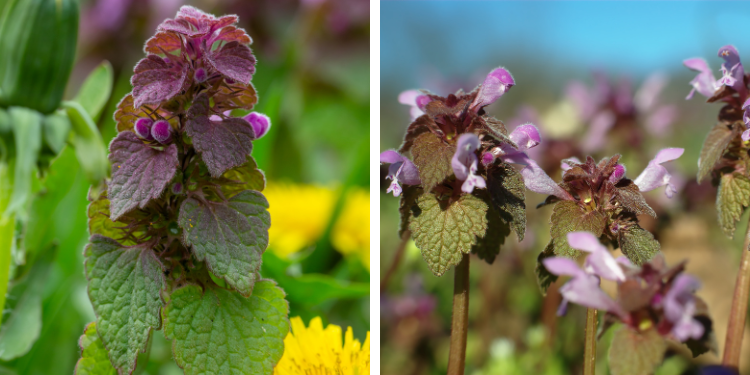
How to Recognize Purple Dead Nettle
Correctly identifying purple dead nettle is essential if you plan to harvest it.
Here’s what to look for:
1. Leaves
- Shape: Heart-shaped with a scalloped or slightly toothed edge.
- Texture: Soft, fuzzy surface.
- Color: The upper leaves are often tinged purple or reddish, especially in full sun. Lower leaves may be green.
- Arrangement: Leaves grow opposite each other in pairs along the square stem.
2. Stems
- Purple dead nettle has square stems—a telltale sign of plants in the mint family.
- The stem may appear slightly fuzzy or hairy.
3. Flowers
- Color: Small, tubular flowers are usually pink to purple.
- Arrangement: Clusters of flowers emerge at the top of the plant above the purple-tinged leaves.
- Bloom Time: Early spring to late fall, but most abundant in spring.
4. Height and Growth Habit
- Grows low to the ground, typically 5 to 12 inches tall
- Often forms dense patches or groundcover
5. Habitat
- Thrives in disturbed soils, meadows, lawns, gardens, roadsides, and pastures
- Prefers moist soil but tolerates drought and poor soil conditions
Don’t Confuse With:
- Henbit (Lamium amplexicaule): Similar in appearance but has more rounded leaves that grow in clusters around the stem without petioles.
- Red clover or stinging nettle: These have different leaf shapes and lack the square stem and purple flower clusters.
Is Purple Dead Nettle Edible?
Yes! Purple dead nettle is entirely edible—leaves, stems, and flowers.
It’s rich in vitamins A and C, iron, flavonoids, and antioxidants. It’s also known for its mild, slightly sweet grassy flavor with a hint of earthiness.
Harvest young, tender leaves in spring before the plant begins to flower heavily for the best taste and texture.
Medicinal Benefits of Purple Dead Nettle
Purple dead nettle has been used for centuries in folk medicine due to its anti-inflammatory, antibacterial, antifungal, and diuretic properties.
Here are some of its traditional uses:
- Wound healing: Applied as a poultice to minor cuts and abrasions
- Anti-allergy: Helps relieve seasonal allergies due to its natural antihistamines
- Pain relief: Can be used for joint aches and inflammation
- Immune support: High in nutrients and antioxidants, which may boost the immune system
Brilliant Ways to Use Purple Dead Nettle
Now that you know how to identify and harvest it, here are some of the best ways to use purple dead nettle—culinary, medicinal, and even cosmetic.
1. Culinary Uses of Purple Dead Nettle
1. Fresh in Salads
- Use young, tender leaves raw.
- They add a mild earthy flavor and a lovely color contrast.
- Combine with dandelion greens, spinach, or arugula.
Tip: Pick in early spring before the plant becomes too fibrous.
2. Green Smoothies or Juices
- Add a small handful of washed leaves and flowers into your morning smoothie.
- Pairs well with apples, pineapples, ginger, or citrus for a refreshing taste.
How to Prep:
- Rinse well.
- Use a small amount at first to avoid overpowering the flavor.
- Blend with high-moisture fruits and some lemon juice.
3. Stir-Fries, Omelets, and Soups
- Use like spinach or kale.
- Chop and sauté lightly with garlic and olive oil.
- Great in egg dishes, noodle soups, or spring vegetable stir-fries.
4. Pesto and Herb Mixes
- Blend with garlic, lemon juice, nuts/seeds, and olive oil.
- Adds a subtle wild herbal flavor and a nutrient boost.
2. Herbal Tea (Infusion)
Health Benefits:
- Mild antihistamine (can soothe seasonal allergies)
- Supports the immune system
- May ease inflammation and sore throat
- Mildly detoxifying and diuretic
How to Make Dead Nettle Tea:
Ingredients:
- 1 tbsp fresh leaves/flowers (or 1 tsp dried)
- 1 cup hot water
Instructions:
- Rinse and gently bruise the fresh leaves to release oils.
- Place in a teacup or jar.
- Pour over hot (not boiling) water.
- Steep for 7–10 minutes.
- Strain and drink. Add honey or lemon for flavor.
Optional Add-Ins: Peppermint, chamomile, or lemon balm.
3. Tincture Preparation (For Immune & Allergy Support)
How to Make a Purple Dead Nettle Tincture:
You’ll need:
- Fresh dead nettle leaves and flowers
- High-proof vodka or grain alcohol (at least 40%)
- Clean glass jar with lid
- Dropper bottle (for finished tincture)
Steps:
- Fill a clean jar ½ to ¾ full with freshly chopped purple dead nettle.
- Cover completely with alcohol.
- Seal tightly and label with the date.
- Store in a cool, dark place for 4–6 weeks. Shake occasionally.
- Strain through cheesecloth and store in a dropper bottle.
How to Use: Take 10–15 drops in water up to 3x per day for seasonal allergy support or immune boosting.
4. Infused Oil (For Skin Healing and Salve Making)
Skin Benefits:
- Antibacterial and anti-inflammatory
- Soothes cuts, rashes, bug bites, minor burns
- Good base for healing salves and balms
How to Make Infused Oil:
You’ll need:
- Fresh or dried purple dead nettle
- Carrier oil (olive oil, coconut oil, almond oil)
- Glass jar with tight-fitting lid
Steps:
- Chop plant material and place in a dry, clean jar.
- Cover with oil, making sure the plant is fully submerged.
- Let sit in a sunny windowsill for 2–3 weeks.
- Strain and bottle the oil. Store in a cool, dark place.
Salve Option:
To make a healing balm, melt:
- 1 part beeswax
- 3 parts infused oil
Pour into small tins and let harden.
5. Flower Garnish or Herbal Ice Cubes
The purple flowers are edible and look stunning as a garnish on cakes, desserts, or tossed on top of green salads. Freeze in ice cube trays with water to add a beautiful herbal touch to drinks.
6. Dehydrated Herb Powder
Use dried leaves to make a powdered herb blend:
- Dehydrate leaves fully
- Crush into powder using a mortar & pestle or grinder
- Use in soups, herbal seasoning mixes, or sprinkle on roasted veggies
Storage: Keep powder in an airtight jar in a dark pantry. Use within 6 months for best potency.
Precautions and Harvesting Tips
- Always harvest from clean, pesticide-free areas. Avoid roadsides or treated lawns.
- Wash thoroughly before use.
- Consume in moderation, especially the first time. Everyone reacts differently to wild herbs.
- Do not consume if pregnant or nursing without consulting a health professional.
Purple dead nettle is one of the most accessible and useful wild herbs you can forage—and it’s often growing right under your nose!
Once you learn how to identify it, you’ll start seeing it everywhere, especially in early spring.
Whether you’re sipping it in tea, blending it into your smoothie, or applying it as a skin salve, purple dead nettle offers a powerful reminder: some of nature’s best remedies are free, abundant, and wildly overlooked.
